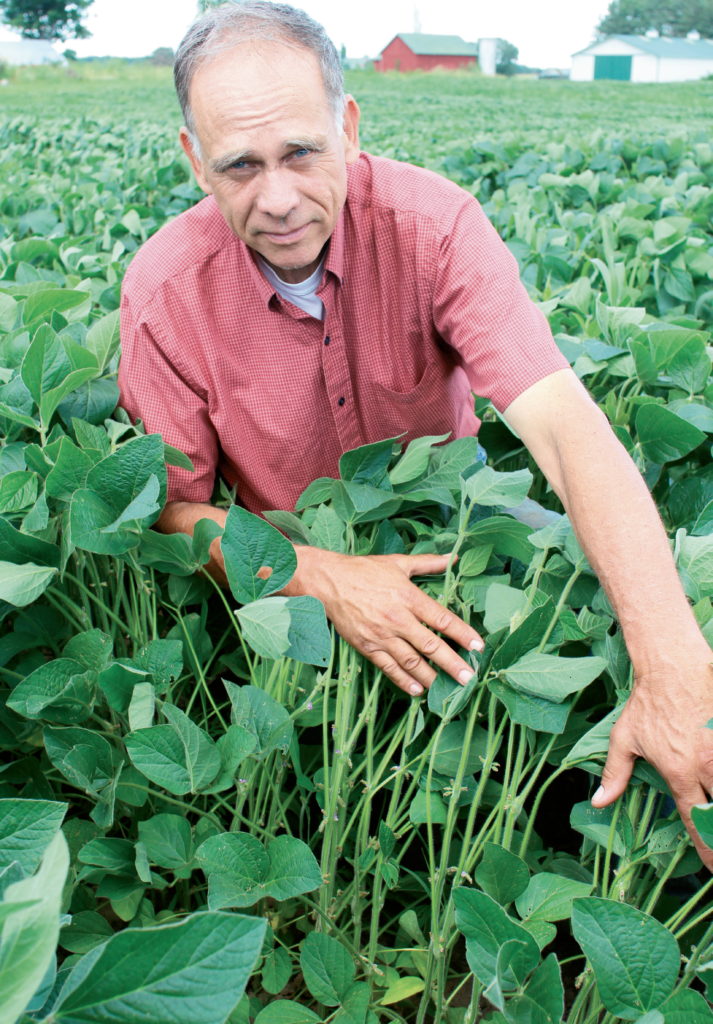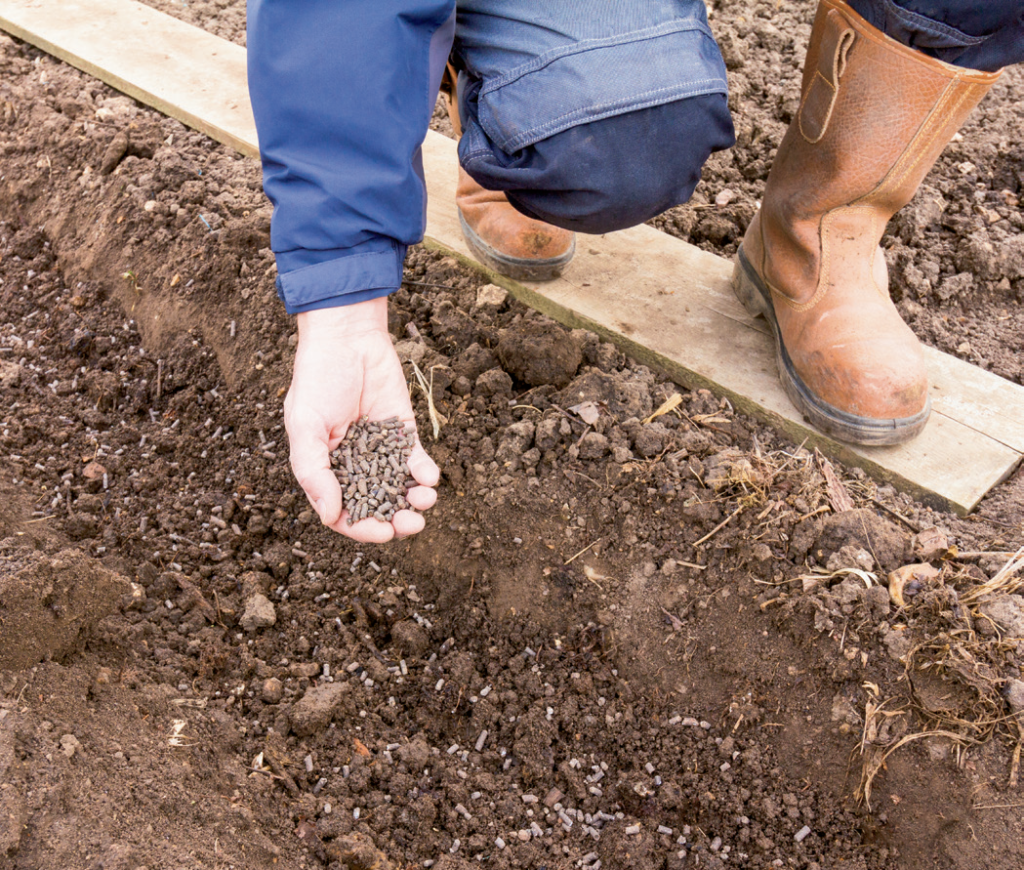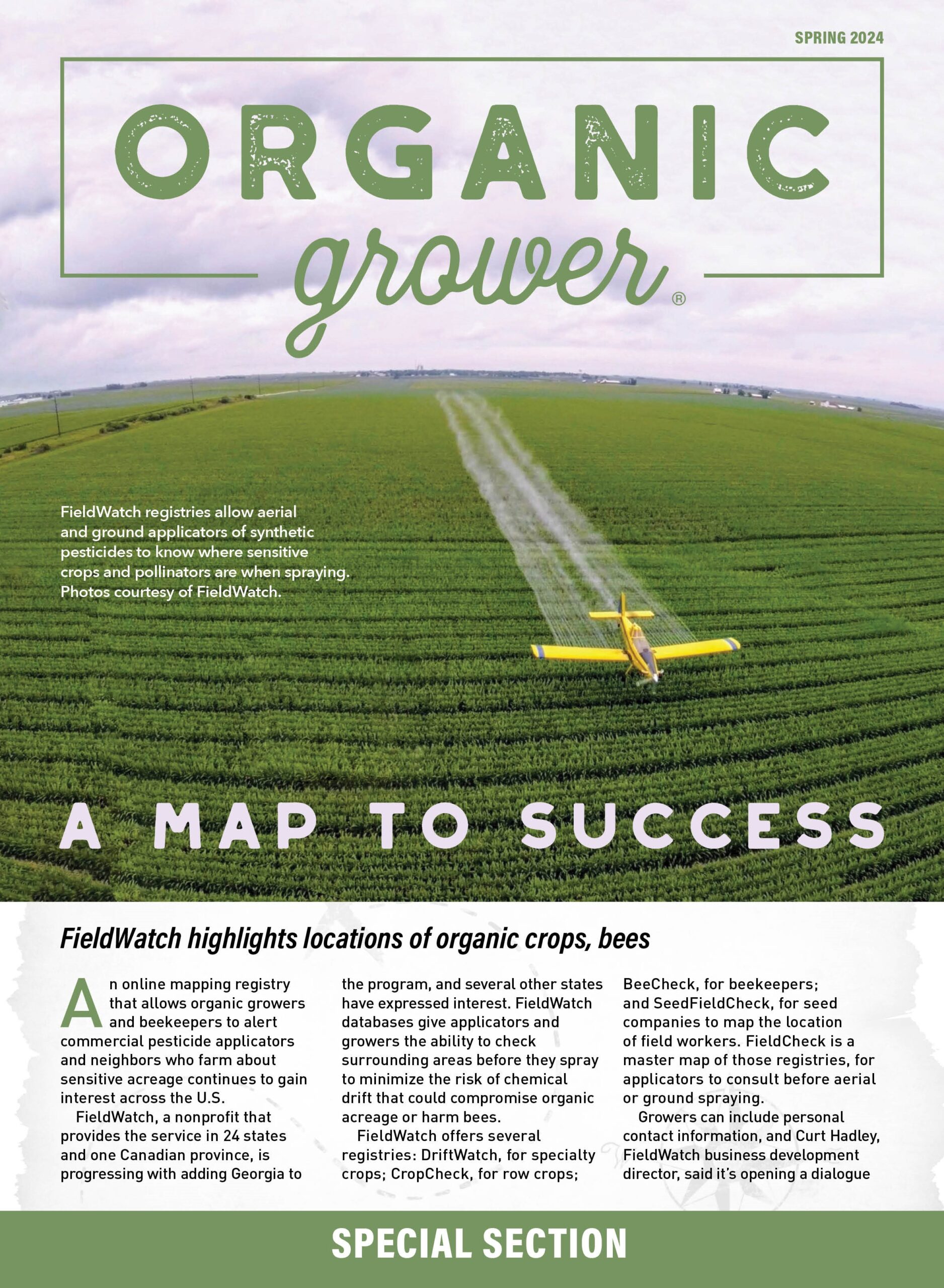Nov 24, 2020
Organic certifier, grower Dan Rossman dishes on soil fertility, weeds
Rossman’s organic farming on the family farm near Lakeview, Michigan, started when the corn price fell to $1.50 per bushel in 1999 and the farmers he had been helping wondered why he hadn’t transitioned to organic.

The farm eventually became certified organic in 2002. Most soils on the farm are a sandy loam with some loam and some loamy sand.
This year, Rossman grew organic soybeans, organic yellow corn and some organic vegetables.
The soybeans are a variety that has large, high protein, clear hilum beans for the organic tofu market. If the beans don’t meet the market’s criteria, they’ll go to organic soy milk or to be roasted for organic dairy feed. The corn is used for organic chicken feed and organic dairy feed. The vegetables are for family and friends.
Rossman has grown several organic crops – blue corn, black beans, hay, oats, rye and even hard red, spring wheat for an artisan market, flour mill.
“Vegetables can be sold through a CSA (Community Supported Agriculture) or a farm market or a stand at the roadside,” Rossman said. “You can’t do that with corn, soybeans and grain. We try to contract everything.”
Chicken for dinner
Poultry manure is the main source of soil nutrients and the nutrient content can vary widely depending on the source.
Rossman uses poultry manure from layers. The amount of nitrogen in it varies with the manure’s moisture content and every load can be different. With two tons applied per acre per year, and a typical analysis of 40 pounds of actual nitrogen per ton, this translates to about 80 pounds of nitrogen. There is also the nitrogen credit from the previous year’s soybean crop.
“I’m probably a little light on the nitrogen,” Rossman said. “But the slower release makes the nitrogen available later in the season when the corn really needs it.” Too high a nitrogen rate would also be a leaching concern on the sandier soils.
Poultry manure is a good source of phosphorus. The potassium content may not be quite enough and potassium sulfate may be a future option – with lime to offset any acidifying effect.

The poultry manure is only applied before corn. It may foster too much growth when applied before soybeans and make white mold more of an issue.
A longer crop rotation is a plus in any cropping system but especially in organic production. Unfortunately, a consistent market for a small grain crop has been hard to come by and a corn-soybean rotation predominates. “A multiple crop rotation is what we strive for,” Rossman said.
Cover crops are a must over winter because of the sandier soils.
Rye is seeded after the corn and soybeans. Aerially seeding rye on the soybeans has helped in the wet falls.
The rye is aerially seeded when the soybeans have dropped half of their leaves. The rest of the leaves fall on the rye and form a wet mulch that germinates the rye. The rye is worked in when it is 12 inches tall in the spring to add organic matter to the soil.
A small grain in the rotation makes a March seeding of clover an option. The legume fixes nitrogen for a corn crop that will follow. Moldboard plowing is the primary tillage. “I know it’s not good for the soil structure but it gives me a fighting chance on weed control,” Rossman said. “If I chisel plow or field cultivate, I get more weeds.”
A weeder and cultivator are used for mechanical weed control after planting. The weeder is an older style with straight tines and performs very shallow tillage.
“You want to use it when the weeds are in the white root stage,” Rossman said. You’re targeting weeds that may emerge after planting before the crop emerges.”
The art of cultivation
“Cultivation is an art form,” Rossman said. “Look at every row and what it’s doing to the crop on each side, maybe changing the teeth, changing the spacing, maybe you need shields, maybe you don’t need shields. You have to evaluate what you’re doing on every row and every side of the row.”
“Every one of your cultivations is important, but your first cultivation is most important,” Rossman said. “You want to get the soil as close to the plant as you can.”
In soybeans this year, the weeder was used three times followed by three cultivations. The first pass with the weeder was three days after planting. “The crop emerges in six to seven days,” Rossman said.
The second was when the soybeans were about one Inch tall but not yet in the trifoliate stage. The third trip was after the first cultivation because the weeder will sometimes move more soil up around the plants. “I plant at a higher plant population because I know I’m rough on the seedlings, but you’ve got to try to keep the field clean,” Rossman said. Soybeans are planted at 180,000 to 200,000 seeds per acre in 30-inch rows.
The three cultivations were spread out with the last one just before the rows closed. Root pruning is a concern with a late cultivation but the goal is to control late-emerging weeds.
Most of the corn this year was also cultivated three times with the weeder used once after planting. “The drawback is time,” Rossman said. “When it’s time to cultivate corn, you need to be planting soybeans. Through June and part of July, you’re glued to that tractor seat cultivating.”
“It’s a lot of work, especially in mid-summer and you lose some areas to weeds and then in the fall, after harvest, after you settle up, you’ve made some money,” Rossman said, “and you know you’re growing something people want.”
Getting organized
Rossman serves on the board of the Michigan Organic Food and Family Alliance (MOFFA). The non-profit was organized in 1992 to promote organic agriculture and develop and support local food systems.
MOFFA offers grower training through workshops called organic intensives. “They are one day workshops on one particular topic – cover crops, weed control, new technology,” Rossman said. “MOFFA also has publications that are top notch – to help growers with their organic endeavors.”
It also offers a directory of organic producers. Rossman’s role as an organic inspector continues. “I like getting out on the farms,” he said. “I like to see what the growers are doing, hear their stories, hear their challenges.”
“Being organic isn’t just doing the right thing in the field. It’s doing the right thing with the right documentation because that’s how you’re certified,” Rossman said. “Most farmers like being organic; most of them don’t enjoy the paperwork. It’s not for the faint of heart.”






